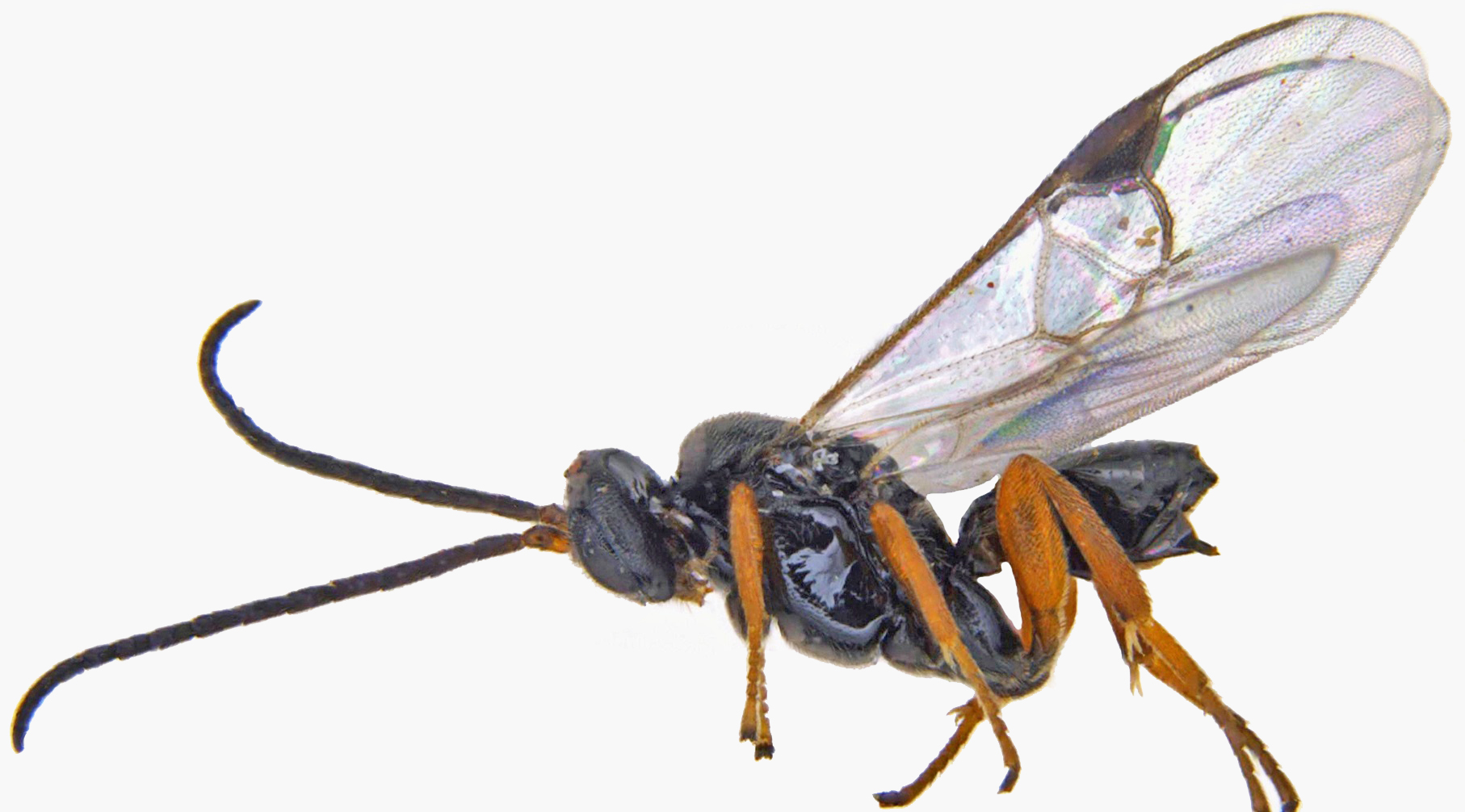Glyptapanteles clanisae Gupta, 2013
Images

Taxonomic placement
Hymenoptera: Braconidae: Microgastrinae
Brief diagnosis
Female: Body length = 2.4–2.65 mm. Body colour: Black. Fore, mid and hind legs light yellow except coxae and tarsal claws dark brownish black. Trochantellus with brown infuscation. Hind femur light yellow, fore and mid femur and tibia yellow, hind tibia yellow (except light brown patch at extreme apical end just above the tibial spur), hind tarsi with brown infuscation on apical half of basitarsus and tarsal segments (2–5), all tarsal claws dark brown. All tibial spurs yellowish white. Scape yellow with brown infuscation apically and on apical edge. Pedicel light brown. Metasoma black. Antenna brownish, palpi dirty yellow, labrum brown yellow, mandibles brown with dark brown edges, tegula dark brown black, ovipositor dark brown. Scape yellow (except apical edge brownish black), pedicel brownish yellow and remainder of antenna brownish; ocelli light brown; tarsal claws brownish black. Wings hyaline, fore wing veins translucent; dark brown pterostigma with a basal hyaline patch and C+SC+R very light brown; hind wing veins translucent.
Comments
The most distinctive character include hard mass of cocoons tightly webbed together with cottony fibers giving appearance of a cotton ball. One cocoon mass/caterpillar harbours nearly 300 wasps of G. clanisae sp. nov. when there is no case of hyperparasitism. However percentage of primary parasitism drops down to nearly half when hyperparasitoid Eurytoma sp. is present. Antenna with scape yellow, brown infuscation apically and on apical edge; scuto-scutellar groove distinctly crenulate with 9–10 deep costulae; all legs light yellow (except coxae and tarsal claws brownish). Hind tibia yellow (except light brown patch at extreme apical end just above the tibial spur), hind tarsi with brown infuscation on apical half of basitarsus and on tarsal segments (2–5), propodeum smooth and nitid with lateral longitudinal carinae diverging towards sides in apical 1/3rd, areola absent; spiracles conspicuously large and oval. First metasomal tergum with deep dorsal concavity basally; widest pre-apically; almost parallel sided medially; apically narrower and curvaceous; with shallow sculpture apically; with fine transverse striations basally. Second metasomal tergum nitid; triangular; ovipositor short and stout, not exserted from hypopygium.
Geographical distribution
India.